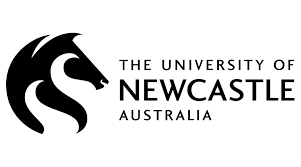Joint Research Discovers Drug Combination That Extends Life Expectancy Of Children With Brain Cancer
Newcastle and Hunter-based researchers have discovered a drug combination that could dramatically improve the life expectancy of children living with brain cancer.
Biomedical scientist Associate Professor Matt DunDiffuse Midline Gliomas (DMG), including diffuse intrinsic pontine gliomas (DIPGs) are the most lethal of childhood cancers.
DMGs are a fast-growing tumour forming the part of the brain responsible for life sustaining functions like heartbeat, breathing, swallowing, eyesight, and balance.
Palliative radiotherapy is the only established treatment, with families advised their child is expected to survive nine to 11 months post diagnosis.
Published in Cancer Research, University of Newcastle and Hunter Medical Research Institute (HMRI)* researchers have uncovered the mechanisms controlling response to the promising oral therapy ‘ONC201’, which is currently being investigated in 12 clinical trials worldwide, across many cancer types.
One of those trials, ‘Combination Therapy for Diffuse Midline Glioma’, (research trial known as PNOC022), was established using the preclinical data largely generated by lead investigator Professor Matt Dun** and his University of Newcastle research team.
“ONC201 appears to improve some patient outcomes, extending median survival to 20, from 11 months,” Professor Dun said.
Professor Dun and his team also discovered the mechanisms controlling resistance to ONC201, and a strategy to combat this through combination with a second drug, ‘paxalisib’ and standard of care treatment, radiotherapy.
How the research transpired in the quest to give families hope
Using cell lines derived from DMG patient tumour samples (each with different genetic features), the University of Newcastle’s Cancer Signalling Research Group (CSRG) assessed how each tumour type responded to the therapy ONC201.
Noticing that in a subset of samples ONC201 had little or no effect, Professor Dun and the team set about assessing the mutations or gene alterations of the resistant samples to understand the cause.
Using ‘high-resolution quantitative proteomic profiling’ the group evaluated the proteins present within ONC201-treated samples, finding disruption to proteins associated with the tumour cells’ energy systems.
Importantly, in response to this, proteins controlling the ‘PI3K signalling pathway’ (promoting cell growth) increased their activity, identifying a mechanism by which DMG cells could evade ONC201’s anti-cancer effect.
A surprising response
Determining that ONC201 treatment increased the activity of the PI3K signalling pathway was surprising, particularly as Professor Dun and his team had already discovered a different drug in DMG – ‘paxalisib’, which acts on this target.
At the time, paxalisib was already in clinical trials as a single drug treatment. The team used its DMG models to test the effect of the drugs in combination, finding them beneficial and safe, progressing the strategy to clinical trial.
Children’s reaction to the drug combination
Professor Dun said the oral therapy ONC201 appeared to be extending survival of patients with DMG. The team’s research paper highlights case studies of children on the combination, some of whom have experienced a reduction in their tumour size and extension of survival.
“As more data becomes available we’ll know the extent of benefit. PNOC022 opened in the United States in 2021 and Australia in 2022, and is now also recruiting in New Zealand, The Netherlands, Switzerland and Israel,” he said.
Currently, approximately 100 children are receiving ONC201+paxalisib combination therapy worldwide. The trial is designed in a unique way – it is open to patients at all disease stages (irrespective of past treatments) and is ‘adaptive’ – new drugs or approaches can be evaluated as additional arms of the trial as supporting data becomes available.
Combining the power of anti-cancer therapies
Professor Dun said their specialist techniques had revealed how two emerging therapies exerted their anti-cancer effect, particularly, the mechanisms controlling whether a patient responded, and the benefits of using them in combination.
“We are continuing to study these drugs in our lab-based DMG models so we can understand how to improve the number of people who respond, or the length/robustness of response a patient might experience, to improve survival outcomes.
The road ahead to optimisation
Professor Dun said knowing how these drugs work was key to making sure as many patients benefit as possible. The research team is studying how to optimise therapy to ensure children receive the maximum tolerated dose without side effects.
“This involves additional supportive medicines, manipulating the dose schedule and further investigation into how to enhance response in resistant tumours,” Professor Dun said.
“Thirteen is the number of years that gets thrown around as the time it takes to move research findings from bench to bedside. I’d really like to highlight that our dedicated efforts have achieved this in less than five.
“But, in my mind, that is still too long. Kids and their families who are told they have DIPG or DMG are advised to ‘go home and make memories’, that there’s no treatments available,” Professor Dun said.
“This leaves families with no hope – an indispensable element when dealing with a cancer diagnosis. The path to move our findings from the lab to the clinic has happened with a number of international collaborators on board. It will be great to build on that spirit of collaboration in Australia so more of the great work being done locally can improve survival of kids with cancer.”

